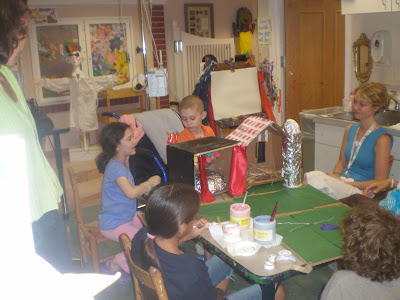Tonight's picture was taken in July of 2009. Mattie was in the outpatient clinic sitting at the art table. As you can see it was a busy place! That day, Mattie and his friend, Maya (the only same aged friend Mattie made in clinic), built a stage for a play out of boxes. They worked on it for a while and then proceeded to act out a play about space aliens. You may not be able to feel the energy through the photo, but there were many children all around us and they were all engaged when the play unfolded.
Quote of the day
- number of people diagnosed with the virus: 4,475,979
- number of people who died from the virus: 151,570
I think deer are quite beautiful and the ones on the island are used to people. After all, we are visiting their home. The deer are frightened of Sunny and keep a close eye on him.
A close up of the female deer.
This is a young buck! Can you see his budding antlers?
Have you ever come close up to a spider web? This one was quite extraordinary. Mattie would have appreciated this.
Did you know.......
Spiders produce silk from their spinneret glands located at the tip of their abdomen. Each gland produces a thread for a special purpose – for example a trailed safety line, sticky silk for trapping prey or fine silk for wrapping it. Spiders use different gland types to produce different silks, and some spiders are capable of producing up to eight different silks during their lifetime. Most spiders have three pairs of spinnerets, each having its own function – there are also spiders with just one pair and others with as many as four pairs.
Webs allow a spider to catch prey without having to expend energy by running it down. Thus it is an efficient method of gathering food. However, constructing the web is in itself an energetically costly process because of the large amount of protein required, in the form of silk. In addition, after a time the silk will lose its stickiness and thus become inefficient at capturing prey. It is common for spiders to eat their own web daily to recoup some of the energy used in spinning. The silk proteins are thus recycled.







No comments:
Post a Comment